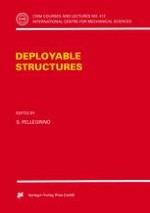2001 | OriginalPaper | Buchkapitel
Stealing Ideas from Nature
verfasst von : Julian F. V. Vincent
Erschienen in: Deployable Structures
Verlag: Springer Vienna
Enthalten in: Professional Book Archive
Aktivieren Sie unsere intelligente Suche, um passende Fachinhalte oder Patente zu finden.
Wählen Sie Textabschnitte aus um mit Künstlicher Intelligenz passenden Patente zu finden. powered by
Markieren Sie Textabschnitte, um KI-gestützt weitere passende Inhalte zu finden. powered by
The concept of using ideas from nature to further technology has been given a number of names such as “Biomimetics”, “Biomimesis”, “Biognosis” and “Bionics”. In each instance it’s probably fair to adopt the attitude of Lewis Carroll’s Humpty Dumpty and say that the meaning of all four words is whatever I want it to be — and in this instance I shall define the meaning of all four words as the same. Biomimetics is the technological outcome of the act of borrowing or stealing ideas from nature. It is difficult to trace the origins of this approach, since man has looked to nature for inspiration for more than 3000 years (when the Chinese hankered after an artificial silk). In modern times, the word “bionics” was coined by Jack Steele of the US Air Force in 1960 at a meeting at Wright-Patterson Air Force Base in Dayton, Ohio. He defined it as the science of systems which have some function copied from nature, or which represent characteristics of natural systems or their analogues. In 1966 R-G Busnel, of the animal acoustics laboratory in Jouy-en-Josas in France, organised a meeting on the theme “Biological models of animal sonar systems” in which the Office of Naval Research of the USA was involved. They had already funded other work in the general area of biological engineering, such as Torkel Weis-Fogh’s work on resilin (a rubbery type of insect cuticle) and elastin in Cambridge. Busnel’s meeting was one of the first at which these problems were discussed by biologists, engineers and mathematicians in order to discover general principles of technology.
